Ashtanga yoga is a style of yoga that was popularized by Sri K. Pattabhi Jois and is often referred to as the “Eight-Limbed Yoga” in reference to the eight limbs outlined by the sage Patanjali in the Yoga Sutras.
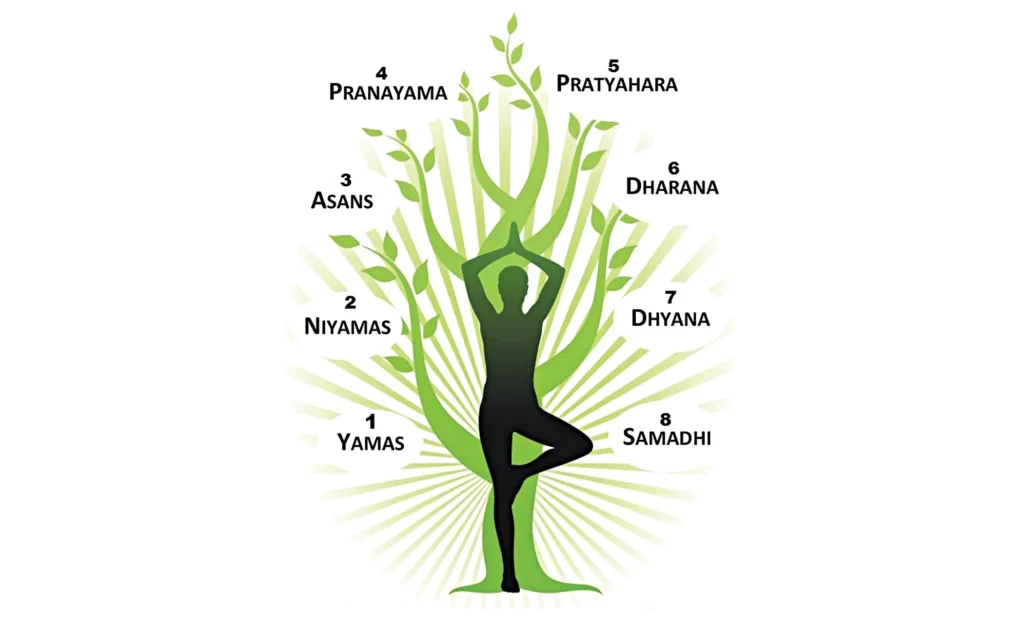
The word “Ashtanga” means “eight limbs” in Sanskrit. These eight limbs are a systematic approach to spiritual and physical practices that aim to guide practitioners toward self-realization and inner peace. The eight limbs are as follows:
Parts of Ashtanga yoga
Yama: (Ashtanga yoga)
These are ethical principles or moral guidelines that provide guidance on how to interact with the world. The yamas include ahinsa (non-violence), satya (truthfulness), asteya (non-stealing), brahmacharya (moderation), and aparigraha (non-greed).
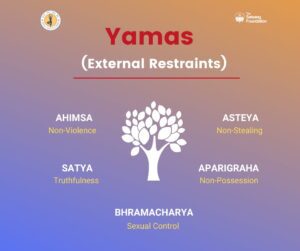
types of Yama
Yama Yoga is a term that is not commonly used to refer to a specific style of yoga. The term “Yama” is actually one of the eight limbs of yoga, as outlined by Patanjali in the Yoga Sutras. Yama refers to the ethical principles or moral guidelines that guide our interactions with the external world. The five Yamas are:
Ahimsa:
Ahimsa means non-violence or non-harming. It encourages practicing compassion, kindness, and non-violence in our thoughts, words, and actions towards all living beings, including ourselves.
Satya:
Satya means truthfulness. It emphasizes the importance of being honest, truthful, and sincere in our words, thoughts, and actions. Satya encourages authenticity and integrity in all aspects of life.
Asteya:
Asteya means non-stealing or non-greed. It encourages us to refrain from taking what does not belong to us, both in material possessions and in relationships. Asteya promotes contentment and gratitude for what we have.
Brahmacharya:
Brahmacharya traditionally refers to celibacy or moderation in sensual pleasures. It encourages the wise and responsible use of our energy, including sexual energy, to maintain balance in our lives. In a broader sense, it can also be interpreted as practicing moderation in all aspects of life.
Aparigraha:
Aparigraha means non-possessiveness or non-attachment. It encourages us to let go of excessive attachment to material possessions, expectations, and desires. Aparigraha promotes a sense of freedom, contentment, and detachment from external outcomes.
These five Yamas provide guidance on how to live a moral and ethical life, both on and off the yoga mat. They serve as a foundation for practicing yoga with mindfulness and compassion towards oneself and others.
While Yama Yoga as a specific style may not exist, many yoga practices and styles incorporate the principles of the Yamas into their teachings and philosophy.
Niyama: (Ashtanga yoga)
These are personal observances or disciplines that help individuals cultivate self-discipline and inner strength. The niyamas include saucha (cleanliness), santosha (contentment), tapas (discipline), svadhyaya (self-study), and Ishvara pranidhana (surrender to a higher power).
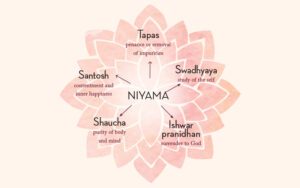
types of Niyama
Niyama Yoga refers to the second limb of yoga as described by Patanjali in the Yoga Sutras. Niyamas are personal observances or self-disciplines that help individuals cultivate positive qualities and behaviors. There are five Niyamas:
Saucha:
Saucha means cleanliness or purity. It involves both external and internal cleanliness. Externally, it refers to keeping the body, surroundings, and environment clean and free from impurities. Internally, it involves purifying the mind through practices such as meditation, self-reflection, and letting go of negative thoughts and emotions.
Santosha:
Santosha means contentment. It is the practice of cultivating a sense of satisfaction and gratitude for what one has in the present moment, rather than constantly seeking external sources of happiness. Santosha teaches us to find contentment and joy within ourselves, regardless of external circumstances.
Tapas:
Tapas refers to self-discipline and austerity. It involves the practice of self-control, determination, and perseverance. Tapas encourages individuals to cultivate inner strength and willpower to overcome obstacles and pursue their goals. It often involves practices such as asana, pranayama, and meditation to generate heat and energy within the body.
Svadhyaya:
Svadhyaya means self-study or self-reflection. It involves the study of sacred texts, scriptures, and philosophical teachings to gain self-knowledge and understanding. Svadhyaya also encompasses self-reflection and introspection, examining one’s thoughts, beliefs, and actions to promote self-awareness and personal growth.
Ishvara pranidhana:
Ishvara pranidhana means surrender to a higher power or divine. It is the practice of recognizing and surrendering to a higher source of wisdom and guidance. Ishvara pranidhana encourages individuals to let go of their ego and trust in the greater flow of life. It involves cultivating faith, devotion, and acceptance of the present moment.
These Niyamas provide guidelines for personal growth, self-improvement, and spiritual development. They help individuals cultivate positive qualities, develop self-awareness, and deepen their connection to themselves and the world around them.
While there may not be specific styles of yoga exclusively dedicated to Niyama Yoga, these principles are incorporated into various yoga practices and traditions. Many yoga styles and teachers emphasize the importance of practicing cleanliness, contentment, self-discipline, self-study, and surrender as part of the overall yogic path.
Asana: (Ashtanga yoga)

Asanas refer to the physical postures practiced in yoga. In Ashtanga Yoga, the practice typically begins with a specific sequence of dynamic, flowing postures, known as the Primary Series or Yoga Chikitsa, followed by the Intermediate Series or Nadi Shodhana. The asanas are designed to build strength, flexibility, and balance, as well as to purify the body and calm the mind.
Pranayama: (Ashtanga yoga)
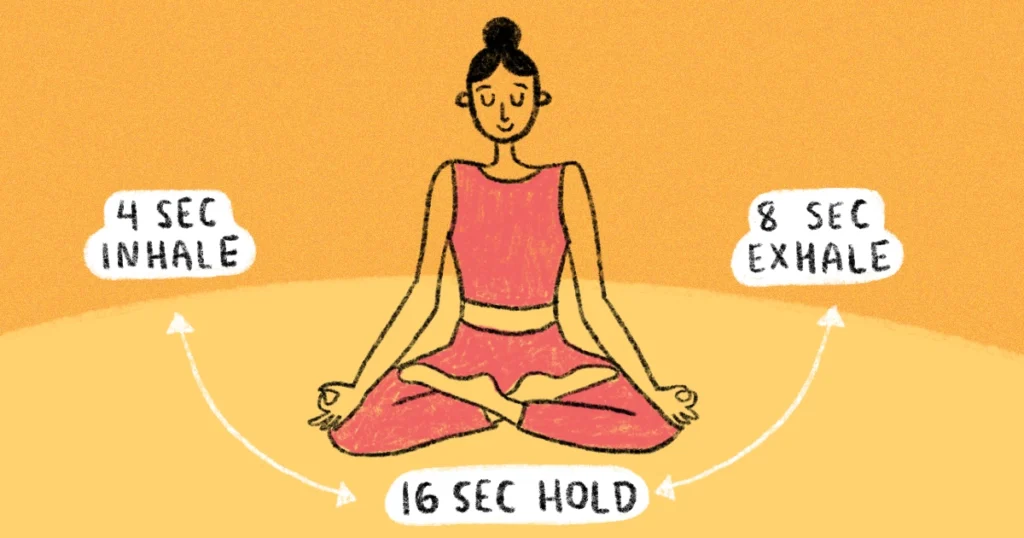
Pranayama involves breath control techniques that regulate and expand the flow of prana (life force energy) in the body. Through various breathing exercises, practitioners learn to control and deepen their breath, which can have a profound effect on their physical and mental well-being.
Pratyahara: (Ashtanga yoga)
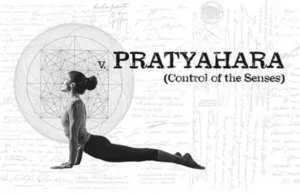
Pratyahara refers to withdrawal of the senses. It is the practice of consciously detaching oneself from external sensory stimuli and turning inward. By withdrawing attention from the senses, practitioners aim to cultivate inner awareness and develop a greater sense of self-control.
Dharana: (Ashtanga yoga)

Dharana is the practice of concentration or one-pointed focus. It involves training the mind to remain steadily focused on a single object or point of focus, such as the breath, a mantra, or an image. Through dharana, practitioners develop mental clarity, mindfulness, and the ability to quiet the fluctuations of the mind.
Dhyana: (Ashtanga yoga)

Dhyana is meditation or sustained contemplation. It is the state of deep absorption where the mind becomes fully focused and immersed in the object of meditation. In this state, practitioners experience a sense of union and connectedness.
Samadhi: (Ashtang yoga)

Samadhi is the ultimate goal of Ashtanga Yoga. It is a state of profound bliss, self-realization, and oneness with the universal consciousness. In samadhi, the practitioner transcends the ego and experiences a state of pure awareness and enlightenment.
Ashtanga Yoga is known for its rigorous and physically demanding practice, with a strong emphasis on synchronizing breath with movement (vinyasa). It is often practiced in a traditional Mysore style, where students progress through the series at their own pace with individualized guidance from a qualified teacher.
It’s important to note that while Ashtanga Yoga is a well-established and respected yoga tradition, it may not be suitable for everyone. It requires dedication, discipline, and a certain level of physical fitness. It is always advisable to consult with a qualified yoga teacher or healthcare professional before starting any new physical practice.
